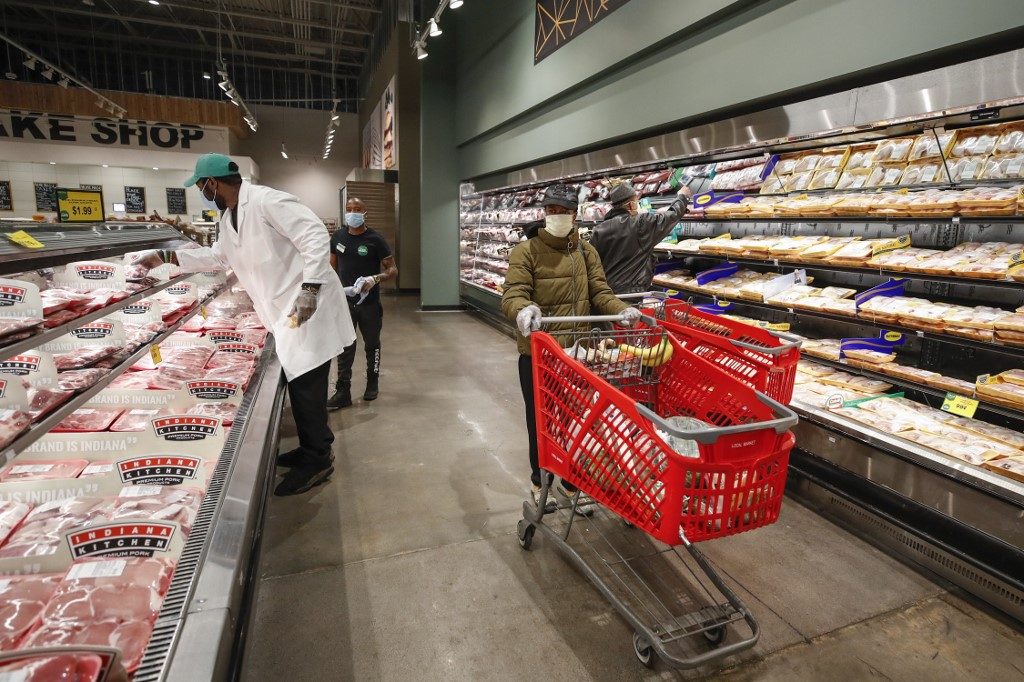SUMMARY
This is AI generated summarization, which may have errors. For context, always refer to the full article.

NEW YORK, USA – Several large American slaughterhouses have closed due to the coronavirus pandemic, leaving farmers unsure what to do with their livestock, and shoppers possibly facing a limited selection of meat.
“We just are going to have consumers facing less choices than they’re used to,” Dawn Thilmany, an agribusiness professor at Colorado State University, told Agence France-Presse (AFP).
“They might have to choose a different set of things – say a roast instead of a rib eye steak, because not everything is going to be available.”
In the worst-case scenario “we’re going see regional or intermittent shortages of meat products,” she added.
Thilmany said she saw strengths in the industry, noting that “some distributors out there have a fairly good stock of frozen meat.”
Kenneth Sullivan, head of meat giant Smithfield, sounded the alarm on Sunday, April 12.
His business indefinitely closed a massive pig slaughterhouse in South Dakota that handled 4% to 5% of national production, due to coronavirus cases among staff.
“The closure of this facility, combined with a growing list of other protein plants that have shuttered across our industry, is pushing our country perilously close to the edge in terms of our meat supply,” he warned.
“It is impossible to keep our grocery stores stocked if our plants are not running.”
Other facilities closed include a Tyson Foods hog plant in Iowa and two JBS cattle slaughterhouses in Pennsylvania and Colorado.
“This situation is changing daily for all critical infrastructure industries,” Julie Anna Potts, president of the North American Meat Institute, said.
“A handful of facilities are closed, some temporarily. Other plants are running fewer shifts or have slowed production.”
Home cooking boosts demand
Physical distancing is difficult on meat production lines, but slaughterhouses have taken protective measures such as systematic employee temperature checks, masks, and tents erected outside as break rooms.
While some staff have fallen ill, others prefer not to take the risk and stay away from work.
On the demand side, restaurant orders have crashed – but the pandemic has also triggered a rush to buy meat from supermarkets or butchers as families stay home and cook.
According to the Nielsen research firm, from March 7 to April 4 shop sales of canned meat jumped 166%, processed meat by 70%, and fresh meat by 59%.
Freezers may now be full after stockpiling, but the summer barbecue season is approaching.
The US Department of Agriculture said it was “closely monitoring” for shortages and – while stocks “at your grocery store might be temporarily low” – there are not yet any widespread disruptions.
Much of the supply due to go to restaurants is now heading to storage.
“I have been speaking with packers, they have record large storage of pork right now,” Dermot Hayes, an economist at Iowa State University, told AFP.
“There’s several weeks, possibly months of supply. The only concern would be if we lose multiple plants.”
On the other hand, farmers face an immediate problem as logistical problems have hit livestock prices despite higher store sales.
According to the National Pork Producers Council (NPPC), farmers will lose nearly $37 per hog, or almost $5 billion collectively, for each animal sold for the rest of the year.
“Hogs are backing up on farms with nowhere to go, leaving farmers with tragic choices to make,” said Wisconsin farmer and NPCC president Howard Roth.
“Dairy producers can dump milk. Fruit and vegetable growers can dump produce. But, hog farmers have nowhere to move their hogs.” (READ: Cheap beef and wasted milk: U.S. agriculture struggles with virus)
One exception could be local suppliers with strong community links.
“Some producers who are small and midsized, who have been serving local markets with direct sales to the consumers or restaurants, may be seeing the strongest demand they’ve ever had,” said Dawn Thilmany. – Rappler.com
Add a comment
How does this make you feel?
There are no comments yet. Add your comment to start the conversation.